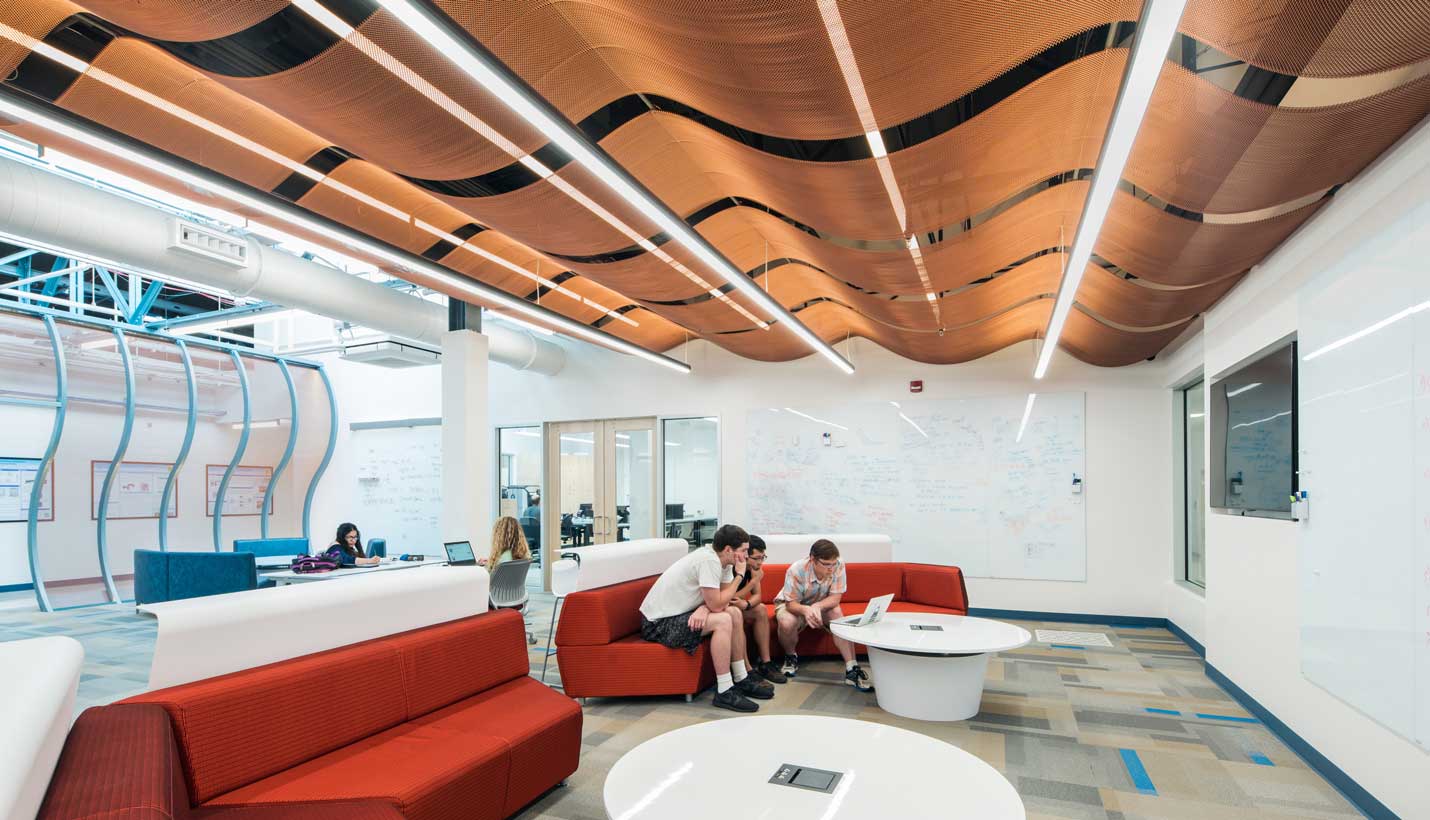

UD Embraces Virtual Reality
In late 2015, Page received a challenge from the University of Delaware’s (UD) College of Electrical and Computer Engineering to develop one of the most dynamic cyber ranges in the country. In an academic setting, a cyber range is a dedicated virtual reality (VR) experience where students work with and compete against international teams. UD needed the cyber range as well as collaboration spaces. The resultant Innovation Suite or iSuite transformed a former metal foundry with three connected areas: maker space, cyber range and collaboration space.
To engage students and faculty alike, the design team partnered with the College of Electrical and Computer Engineering, using Page’s 3-D printers in tandem with the college’s expertise in virtual reality imaging. The design team developed 3-D models and physical mockups to provide tactile examples of the integration between the three spaces and proof of concept for the implementation of the metal fabric forms used for ceiling and wall treatments. Using Page’s BIM model, the students then created a VR model of the proposed space that could be shown on a tablet or cell phone. One significant result of this collaboration was the development of extremely refined promotional materials which contributed to the rapid fundraising campaign. Another benefit was improved engagement: Dr. Kenneth Barner, Charles Black Evans Professor of Electrical Engineering and Department Chair in the College of Electrical and Computer Engineering, credits the new space and VR facilities with an immediate and noticeable increase in enrollments.
The interior concept is based on a series of electrical metaphors, with the design of the metal fabric inspired by the sinusoidal nature of electrical wave forms and also suggestive of a type of signal modulation used in cryptography and signal processing counter-measures. From a practical standpoint, the forms were also utilized to provide a sense of enclosure for the collaboration spaces and to direct a soft visual emphasis to a small group teaching and presentation area.
The use of metal fabric in a draped form as a catenary is relatively commonplace. However, as the designers quickly discovered when constructing a 1/2 scale mockup, they found that by orienting the warp or wave of the material in the wrong direction, true curves could be generated through exploiting the materials’ structural properties along this curved axis. According to the materials manufacturer, this was the first time the material has been utilized in this manner.
Another innovative feature of the project occurs as the classroom transforms in to the cyber range. In the VR mode, the lights dim and a large array of curved monitors descend from above the ceiling cavity to desk height.
The project was recently recognized by the Delaware Contractors Association for its use of innovative technologies. The citation notes the agility of the use of technology in the design as well as the flexibility of the design team members, who during construction quickly incorporated a previously covered, abandoned large skylight and integrated this into the collaboration space. The found source of natural light further enhanced the experience of the design lab and adjacent workspaces, complementing the physical linkage of the three spaces.
11/14/2017








